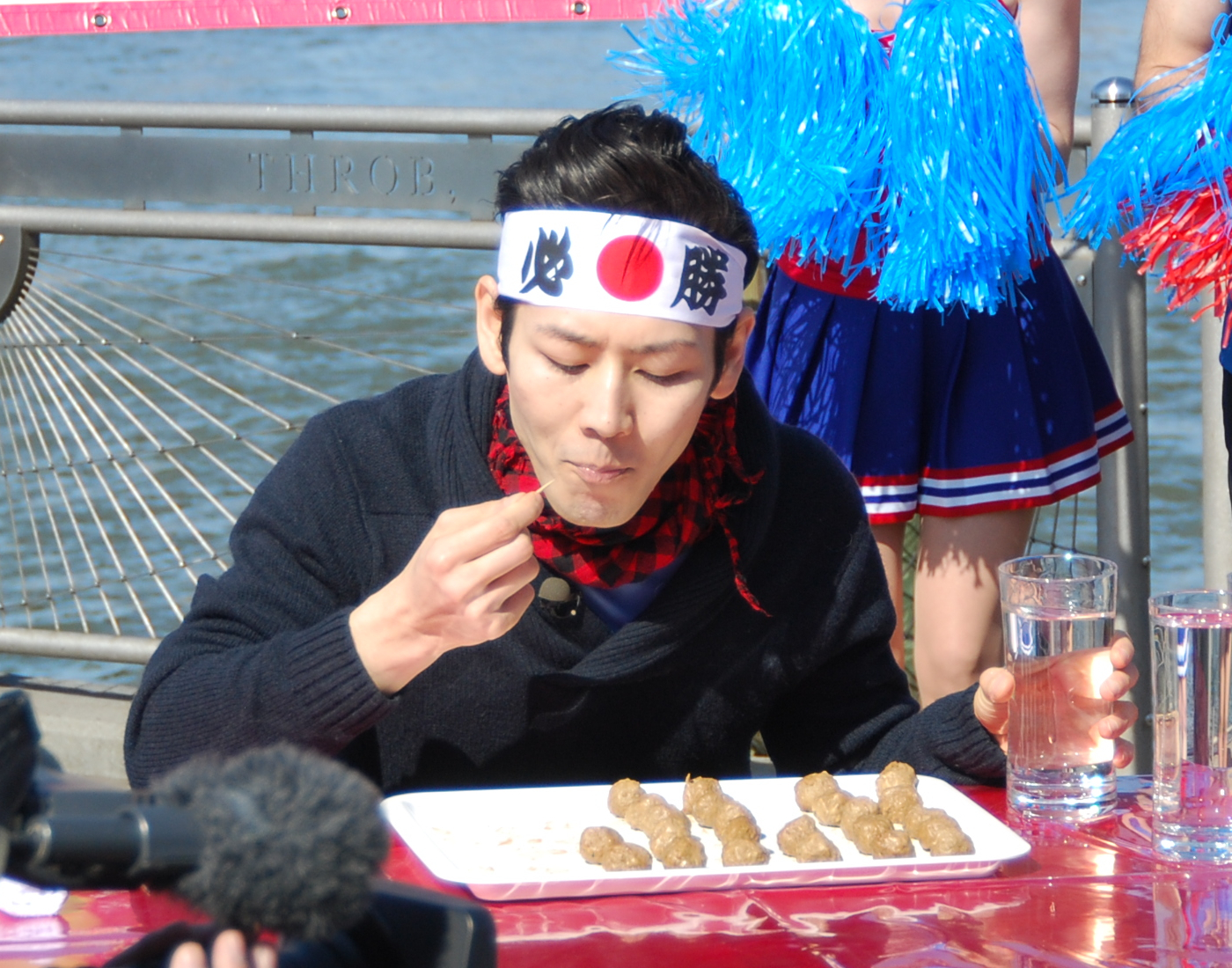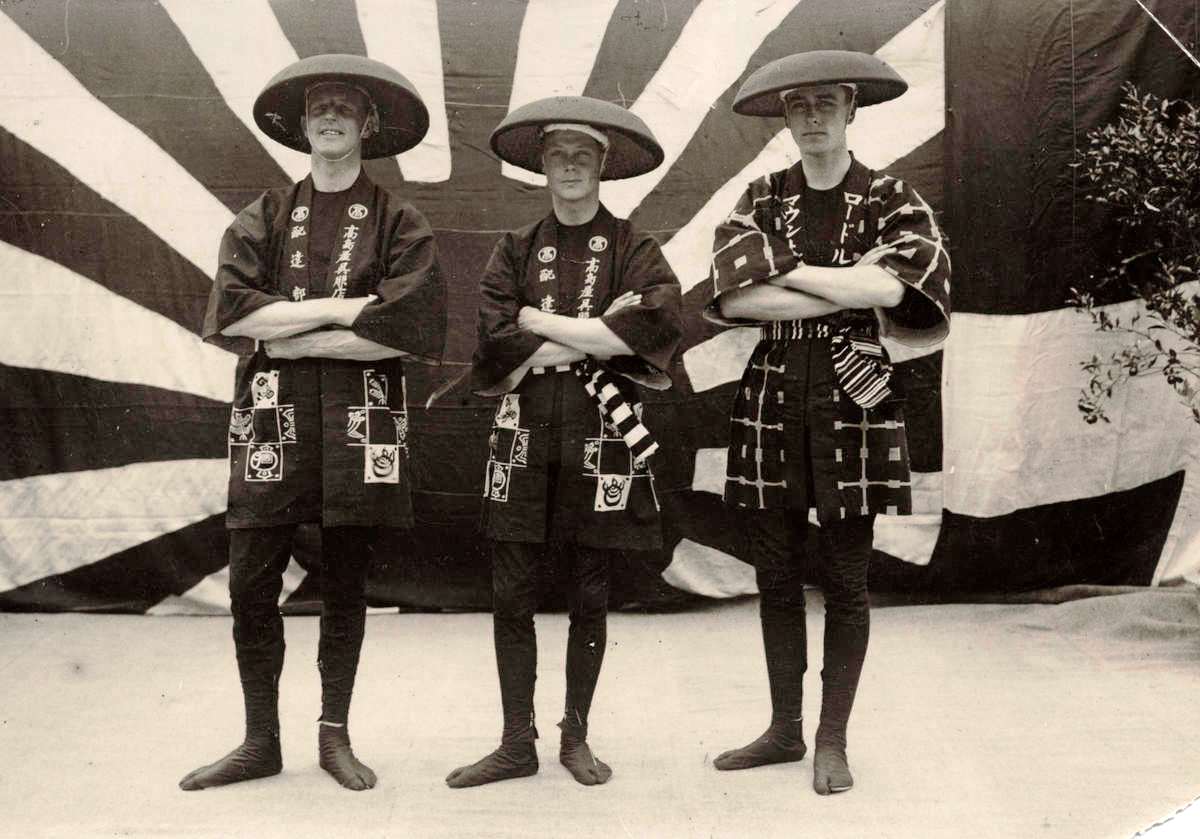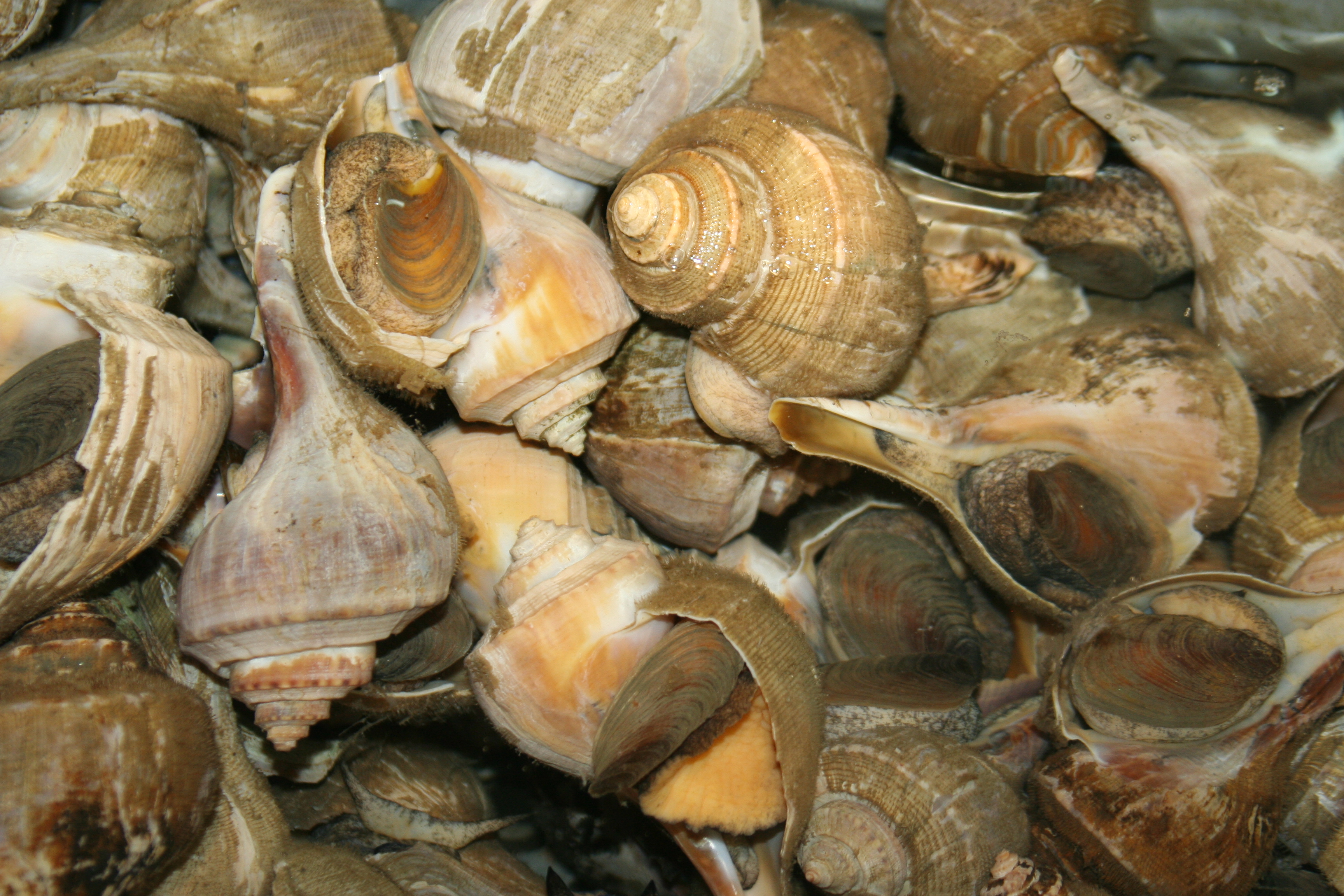|
Midwest Buddhist Temple
The Midwest Buddhist Temple Taiko group is a self-taught taiko group based in Chicago, Illinois, at the Midwest Buddhist Temple (Buddhist Churches of America). The group started in 1977 based upon Buddhistic principals after the model of Kinnara Taiko in Los Angeles. The Midwest Buddhist Temple Taiko group performs for the temple, the Buddhist community, the Japanese American community, other communities, commercial gigs, business conferences, and different ethnic fairs. They do not consider themselves to be primarily a performing group, and they do service projects with the temple such as performing at the Midwest Buddhist Temple Ginza Holiday Festival. History The Midwest Buddhist Temple Taiko group started in 1977 with the help of the Kinnara Taiko based out of the Senshin Buddhist Temple in Los Angeles, California. The Midwest Buddhist Temple Taiko group inherited the Kinnara Taiko Group philosophy for Japanese American Buddhist Taiko. In the 1970s, Reverend Masao Kodani of ... [...More Info...] [...Related Items...] OR: [Wikipedia] [Google] [Baidu] |
Taiko
are a broad range of Traditional Japanese musical instruments, Japanese percussion instruments. In Japanese language, Japanese, the term refers to any kind of drum, but outside Japan, it is used specifically to refer to any of the various Japanese drums called and to the form of ensemble drumming more specifically called . The process of constructing varies between manufacturers, and the preparation of both the drum body and skin can take several years depending on the method. have a mythological origin in Japanese folklore, but historical records suggest that were introduced to Japan through China, Chinese and Korean cultural influence as early as the 6th century CE; pottery from the Haniwa period depicting drums has also been found. Some are similar to instruments originating from India. Archaeological evidence also supports the view that were present in Japan during the 6th century in the Kofun period. Their function has varied throughout history, ranging from com ... [...More Info...] [...Related Items...] OR: [Wikipedia] [Google] [Baidu] |
Johnny Mori
Johnny Mori is a third-generation ( Sansei) Japanese American musician and arts educator/administrator from Los Angeles. He was one of the seminal members of the taiko group Kinnara Taiko and the original taiko drummer for the Grammy nominated jazz-fusion band Hiroshima. Personal life Mori was born in 1949 in Salt Lake City, Utah. He grew up in a primarily Japanese American community in southwest Los Angeles Los Angeles, often referred to by its initials L.A., is the List of municipalities in California, most populous city in the U.S. state of California, and the commercial, Financial District, Los Angeles, financial, and Culture of Los Angeles, ... and attended Los Angeles High School. He formerly worked as the general manager of the Aratani/ Japan America Theatre at the Japanese American Cultural and Community Center (JACCC) in Los Angeles. Taiko Mori was surrounded by taiko from his childhood days, often seeing taiko being performed at Obon Festivals in Los Angeles ... [...More Info...] [...Related Items...] OR: [Wikipedia] [Google] [Baidu] |
Philadelphia
Philadelphia ( ), colloquially referred to as Philly, is the List of municipalities in Pennsylvania, most populous city in the U.S. state of Pennsylvania and the List of United States cities by population, sixth-most populous city in the United States, with a population of 1,603,797 in the 2020 United States census, 2020 census. The city is the urban core of the Philadelphia metropolitan area (sometimes called the Delaware Valley), the nation's Metropolitan statistical area, seventh-largest metropolitan area and ninth-largest combined statistical area with 6.245 million residents and 7.379 million residents, respectively. Philadelphia was founded in 1682 by William Penn, an English Americans, English Quakers, Quaker and advocate of Freedom of religion, religious freedom, and served as the capital of the Colonial history of the United States, colonial era Province of Pennsylvania. It then played a historic and vital role during the American Revolution and American Revolutionary ... [...More Info...] [...Related Items...] OR: [Wikipedia] [Google] [Baidu] |
Thanksgiving
Thanksgiving is a national holiday celebrated on various dates in October and November in the United States, Canada, Saint Lucia, Liberia, and unofficially in countries like Brazil and Germany. It is also observed in the Australian territory of Norfolk Island. It began as a day of giving thanks for the blessings of the harvest and of the preceding year. Various similarly named harvest festival holidays occur throughout the world during autumn. Although Thanksgiving has historical roots in religious and cultural traditions, it has long been celebrated as a Secularity, secular holiday as well. History Prayers of thanks and special thanksgiving ceremonies are common among most religions after harvests and at other times of the year. The Thanksgiving holiday's history in North America is rooted in English traditions dating from the Protestant Reformation. It also has aspects of a harvest festival, even though the harvest in New England occurs well before the late-November date on ... [...More Info...] [...Related Items...] OR: [Wikipedia] [Google] [Baidu] |
Tabi
are traditional Japanese socks worn with thonged footwear such as zori, dating back to the 15th century. History Japanese are usually understood today to be a kind of split-toed sock that is not meant to be worn alone outdoors, much like regular socks. However, were originally a kind of leather shoe made from a single animal hide, as evidenced by historical usage and the earlier form of the word, , written , with the kanji literally signifying "single hide".'' Nihon Kokugo Daijiten'', entry for tabi available onlinhere(in Japanese)'' Dajirin'', second edition, 1995'' Shin Meikai Kokugo Jiten'', fifth edition, 1997 As Japanese footwear evolved, also changed, with the split-toe design emerging towards the late Heian period (794–1185 CE) to allow the wearer to accommodate the thong of sandals.'' Sekai Dai Hyakka Jiten'', second edition, entry available onlinhere(in Japanese) Outdoor versions of involved some kind of reinforcement, with soles traditionally made of cloth, ... [...More Info...] [...Related Items...] OR: [Wikipedia] [Google] [Baidu] |
Hachimaki
A (headband, "helmet-scarf") is a type of Japanese headband, usually made of red or white cloth, typically featuring a design of kanji at the front. History The origin of the ''hachimaki'' is uncertain, but the most common theory states that they originated as headbands used by samurai, worn underneath the ''kabuto'' to protect the wearer from cuts and to absorb sweat. Inspired by samurai, ''kamikaze'' pilots in World War II wore ''hachimaki'' while flying to their deaths. In modern Japan, ''hachimaki'' are often emblazoned with slogans and red circles reminiscent of the flag of Japan. They serve the function of absorbing sweat during physical activity, so they are often worn by sportspeople. ''Hachimaki'' may be worn to showcase Japanese nationalism Japanese nationalism is a form of nationalism that asserts the belief that the Japanese people, Japanese are a monolithic nation with a single immutable culture. Over the last two centuries, it has encompassed a broad range ... [...More Info...] [...Related Items...] OR: [Wikipedia] [Google] [Baidu] |
Happi
A is a traditional tube-sleeved Japanese coat, usually worn only during festivals. typically feature symbols and/or text on the lapels, with a larger design on the back of the coat, typically the name or the festival or the participating association; the kanji for () may also be present. Originally worn for display of the , or family emblem, were worn by house servants as a uniform. Firefighters also wore coats, with the crest on the back of the coat displaying the group with which they were associated;Drazen, Patrick. ''Anime explosion!: the what? why? & wow! of Japanese animation''. Stone Bridge Press, 2003. Page 322 "In time, these groups of fire-fighters, adopting uniforms consisting of the short jackets called ''happi'' emblazoned with the ''mon'' (crest) of the particular group, so that one gang could be distinguished from another." these were distinct from the () also worn by firefighters, constructed from heavily-quilted cotton layers designed to hold a large ... [...More Info...] [...Related Items...] OR: [Wikipedia] [Google] [Baidu] |
Conch
Conch ( , , ) is a common name of a number of different medium-to-large-sized sea snails. Conch shells typically have a high Spire (mollusc), spire and a noticeable siphonal canal (in other words, the shell comes to a noticeable point on both ends). Conchs that are sometimes referred to as "true conchs" are Marine (ocean), marine gastropods in the family (biology), family Strombidae, specifically in the genus ''Strombus'' and other closely related genera. For example, ''Aliger gigas'', the queen conch, is a true conch. True conchs are identified by their long spire. Many other species are also often called "conch", but are not at all closely related to the family Strombidae, including ''Melongena'' species (family Melongenidae) and the horse conch ''Triplofusus papillosus'' (family Fasciolariidae). Species commonly referred to as conches also include the sacred chank or ''shankha'' shell (''Turbinella pyrum'') and other ''Turbinella'' species in the family Turbinellidae. The ... [...More Info...] [...Related Items...] OR: [Wikipedia] [Google] [Baidu] |
Binzasara
is a traditional Japanese percussion instrument used in folk songs, and rural dances. It was originally used as a cleaning tool. The instrument is made up of several wooden plates strung together with a cotton cord, with handles at both ends. Typically, a binzasara will have 108 wooden slats which is a significant number in Buddhism Buddhism, also known as Buddhadharma and Dharmavinaya, is an Indian religion and List of philosophies, philosophical tradition based on Pre-sectarian Buddhism, teachings attributed to the Buddha, a wandering teacher who lived in the 6th or .... The stack of wooden plates is played by making them move like a wave. ', May, 2009. Reference ...
|
Kane (instrument)
A (:ja:鉦鼓(:en:Shōko (instrument)) or :ja:摺鉦) is a type of dish-shaped Bell (instrument), bell from Japan. The is often found in traditional Japanese music or min'yō. Although sometimes suspended from a bar, it is more common for a musician to hold the bell in place with one hand beat it with the other using a special mallet called a or , often made from bone. The ''kane'' makes three distinct sounds: ''chan'' - hitting the middle; ''chi'' - hitting the inside edge; and ''ki'' - reversing the stroke. This kind of onomatopoeic mnemonic or ''Kuchi shōga'' is common in Japanese music. There are several sizes of ''kane'', such as the ''atarigane'' or the ''surigane''. ''Kane'' are also used in Buddhist or Shinto ceremonies. In temples, they may be used to signify time or alert people to certain events. See also *Bonshō *Bell (instrument)#Japanese bells, Japanese bells *Shōko (instrument) *Suzu (bell), Suzu References Japanese musical instruments Bells (pe ... [...More Info...] [...Related Items...] OR: [Wikipedia] [Google] [Baidu] |
Japan
Japan is an island country in East Asia. Located in the Pacific Ocean off the northeast coast of the Asia, Asian mainland, it is bordered on the west by the Sea of Japan and extends from the Sea of Okhotsk in the north to the East China Sea in the south. The Japanese archipelago consists of four major islands—Hokkaido, Honshu, Shikoku, and Kyushu—and List of islands of Japan, thousands of smaller islands, covering . Japan has a population of over 123 million as of 2025, making it the List of countries and dependencies by population, eleventh-most populous country. The capital of Japan and List of cities in Japan, its largest city is Tokyo; the Greater Tokyo Area is the List of largest cities, largest metropolitan area in the world, with more than 37 million inhabitants as of 2024. Japan is divided into 47 Prefectures of Japan, administrative prefectures and List of regions of Japan, eight traditional regions. About three-quarters of Geography of Japan, the countr ... [...More Info...] [...Related Items...] OR: [Wikipedia] [Google] [Baidu] |
Shime-daiko
The is a small Japanese drum. It has a short but wide body with animal skin drumheads on both its upper and bottom sides. The hide is first stretched on metal hops, then stretched over the body. Similar to the tsuzumi and to African talking drums, both drum heads are bound together with cords so that the drum heads are bound by each other. Like the larger taiko drums, the shime-daiko is played with sticks called " bachi," while it's suspended on a stand. Being very taut, the shime-daiko has a higher pitch than that of normal taiko. Shime-daiko are used in various Japanese music ensembles, from nagauta, hayashi, taiko are a broad range of Traditional Japanese musical instruments, Japanese percussion instruments. In Japanese language, Japanese, the term refers to any kind of drum, but outside Japan, it is used specifically to refer to any of the various J ..., to folk music, or min'yō ensembles. Shime-daiko have been used in Japanese music genre since the ''den ... [...More Info...] [...Related Items...] OR: [Wikipedia] [Google] [Baidu] |








